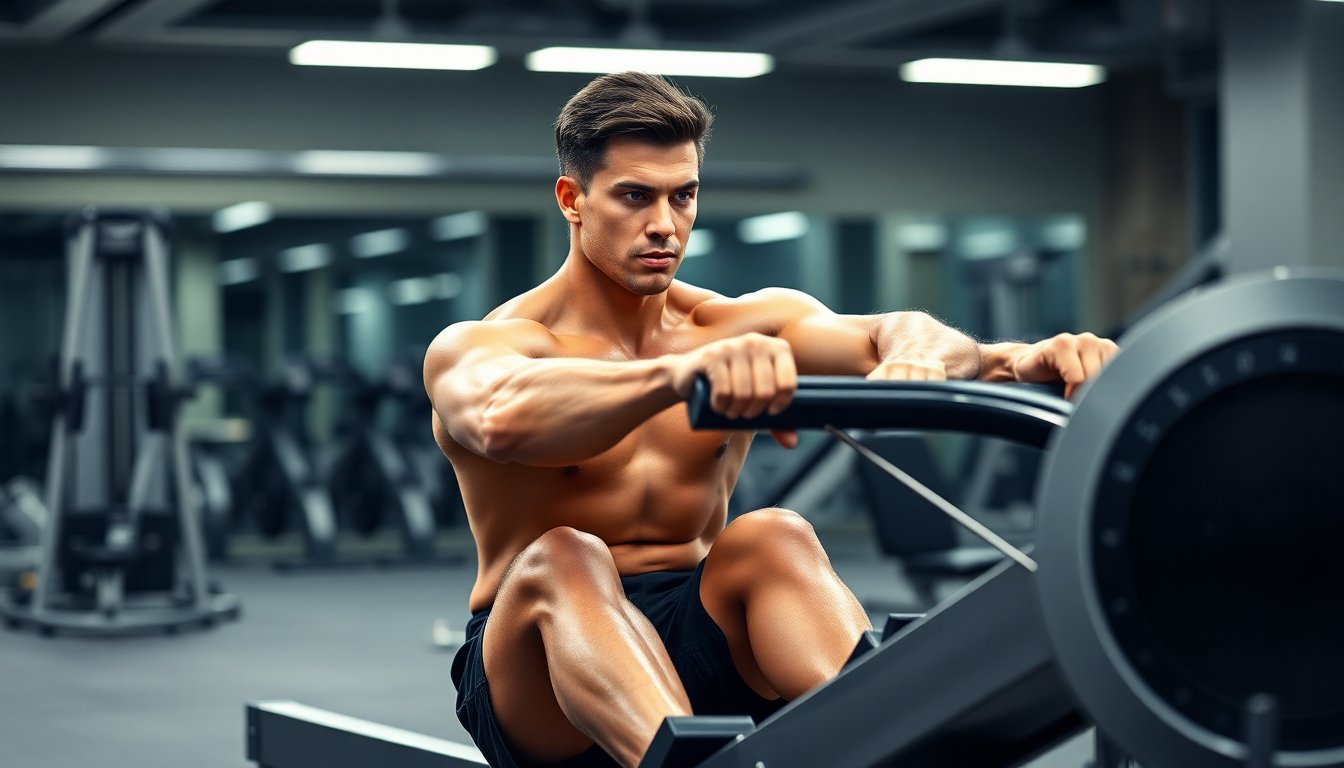Water Rowing machines have become a staple in many home gyms and fitness centres, offering a low-impact, full-body workout that can help you build strength, improve cardiovascular fitness, and burn calories. However, to get the most out of your water rowing machine workouts, it's essential to master the proper form and technique. In this comprehensive guide, we'll cover the basics of using a rowing machine, common mistakes to avoid, and tips to help you maximize your workout.

Understanding the Stroke of Water Rowing Machine
The rowing stroke is a complex movement that involves coordinating your legs, core, and arms. It's divided into four main phases:
- The Catch: This is the starting position of the stroke, where your knees are bent, your back is straight, and your arms are extended toward the flywheel.
- The Drive: As you begin the stroke, you'll push with your legs, engage your core, and pull the handle toward your chest.
- The Finish: At the end of the stroke, your legs should be extended, your back should be slightly leaned back, and your arms should be pulled in close to your body.
- The Recovery: This is the return to the starting position, where you'll straighten your legs, lean forward, and extend your arms to prepare for the next stroke.
Mastering the timing and coordination of these four phases is key to achieving a smooth, efficient rowing stroke.
Proper Water Rowing Machine Form
Maintaining proper form on the rowing machine is crucial to avoid injury and get the most out of your workouts. Here's a step-by-step guide to help you achieve the perfect rowing technique:
1. Try Leg Isolations
Start by focusing on your leg drive. Sit on the water rowing machine with your feet firmly planted on the footpads, your knees bent, and your back straight. Engage your core and push back with your legs, straightening them while keeping your back and arms stationary. This leg-dominant movement will help you build strength and power in your lower body.
2. Add Arm Isolations
Once you've mastered the leg drive, incorporate your arms. From the starting position, extend your arms and pull the handle toward your chest, keeping your back straight and your core engaged. Avoid hunching your shoulders or rounding your back.
3. Bring It All Together
Combine the leg drive and arm pull to complete the full rowing stroke. As you push back with your legs, engage your core and pull the handle toward your chest. Finish the stroke by leaning back slightly, then return to the starting position by straightening your legs and extending your arms.
Remember to keep your movements smooth and controlled throughout the entire stroke. Avoid jerky or sudden movements, as this can put unnecessary stress on your joints and muscles.
Common Rowing Mistakes and How to Fix Them
Even experienced rowers can sometimes fall into bad habits. Here are five common mistakes to watch out for and how to correct them:
Mistake No. 1: You Hunch Your Back
A rounded or hunched back can put unnecessary strain on your spine and limit the power you can generate. Keep your back straight and your shoulders down and back throughout the stroke.
Mistake No. 2: You Make a Scooping Motion as You Row
Avoid a scooping or arching motion with your back. Instead, focus on keeping your back flat and using your legs to drive the movement.
Mistake No. 3: You Raise Your Arms Too High
Pulling the handle all the way to your chest can cause your shoulders to shrug and put unnecessary strain on your upper body. Instead, aim to pull the handle to just below your chest.
Mistake No. 4: You Let Your Knees Drop to the Side
Keep your knees aligned with your feet throughout the stroke. Allowing your knees to drop to the side can put stress on your joints and limit the power you can generate.
Mistake No. 5: You Have a Death Grip on the Oar
Gripping the handle too tightly can cause tension in your arms and shoulders, which can lead to fatigue and poor form. Maintain a firm but relaxed grip on the handle.
By being mindful of these common mistakes and focusing on proper form, you'll be well on your way to mastering the rowing machine and getting the most out of your workouts.
Maximizing Your Rowing Machine Workouts
In addition to proper form, there are a few other tips to help you get the most out of your rowing machine workouts:
- Vary Your Workouts: Mix up your rowing workouts by incorporating intervals, sprints, and longer, steady-state sessions. This will help you build endurance, power, and overall fitness.
- Engage Your Core: Maintain a strong, engaged core throughout your rowing workouts. This will help you generate more power and maintain proper form.
- Hydrate and Refuel: Remember to stay hydrated before, during, and after your workouts, and be sure to refuel with a balanced meal or snack to aid in recovery.
- Listen to Your Body: If you experience any pain or discomfort, stop your workout and consult a healthcare professional. Proper form and technique are essential to avoiding injury.
By following these tips and mastering the proper rowing technique, you'll be well on your way to getting the most out of your rowing machine workouts and achieving your fitness goals.
Conclusion
The rowing machine is a versatile and effective piece of exercise equipment that can help you build strength, improve cardiovascular fitness, and burn calories. By understanding the proper form and technique, and avoiding common mistakes, you can maximize the benefits of your rowing workouts and take your fitness to the next level. So, what are you waiting for? Hop on that rowing machine and get ready to row your way to a healthier, stronger you!

